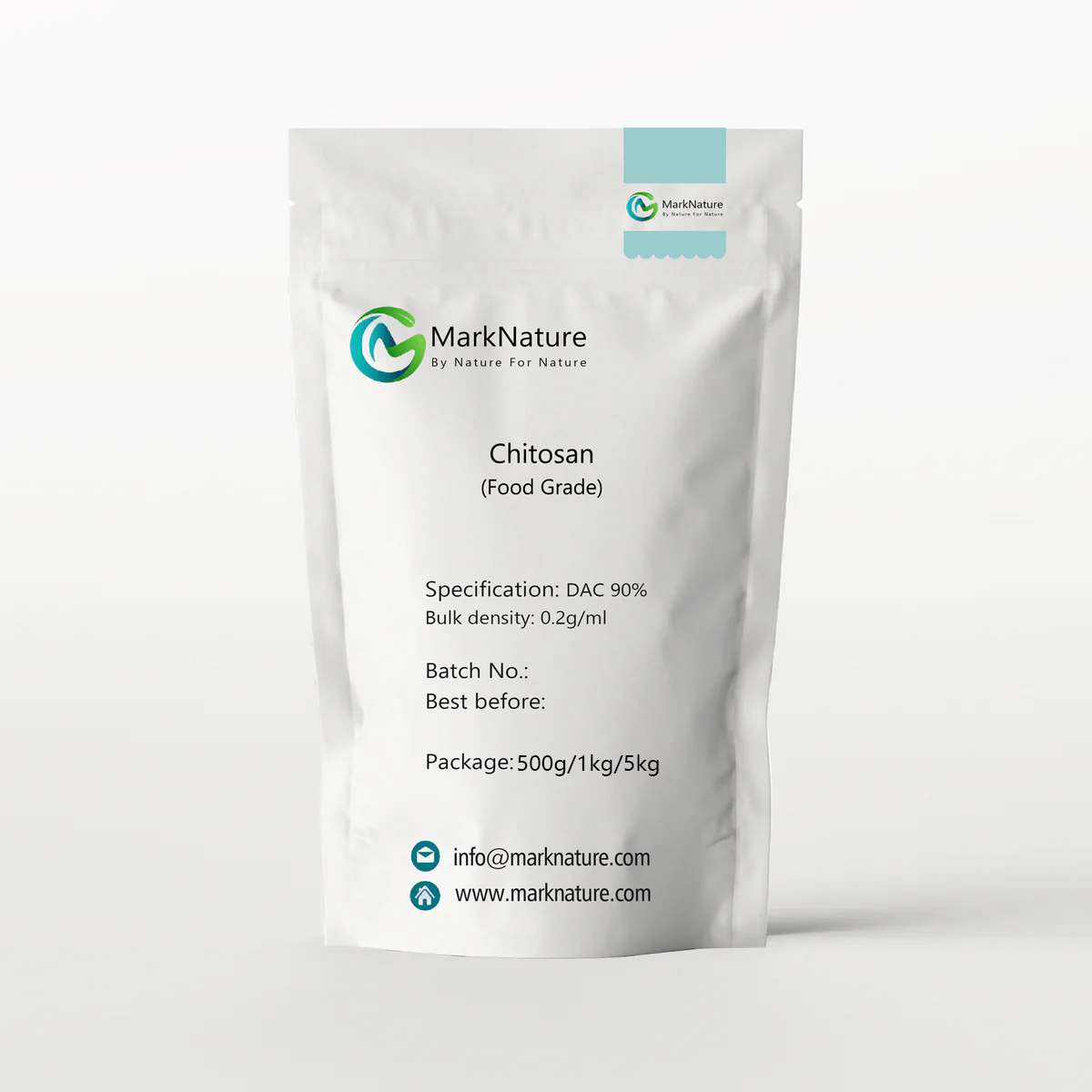Description
Chitosan is a natural biopolymer obtained from chitin, primarily derived from snow crab shells, with a deacetylation degree of 90%. Featuring excellent biocompatibility, biodegradability, and environmental safety, it serves as a versatile ingredient across food, agriculture, pharmaceutical, and textile industries. As a key raw material for producing chitosan derivatives, it provides the foundation for numerous biofunctional products. Chitosan’s natural origin and strong cationic activity make it suitable for food preservation, biostimulant formulations, and biomedical applications requiring sustainable, bio-based materials.
Specification:
Appearance: Faint yellow flake or powder
Source: Snow crab shell
Deacetylation (DAC): ≥90.0%
Bulk Density: ≥0.2 g/ml
Molecular Weight: 100K–200K Da
Chemical Formula: (C₆H₁₁NO₄)ₙ
CAS No.: 9012-76-4
EC No.: 618-480-0
Synonyms: Deacetylated Chitin; Poly(D-glucosamine); β-(1,4)-2-Amino-2-deoxy-D-glucose
Key Features:
1)、High deacetylation degree (≥90%) ensuring strong cationic activity and consistent quality
2)、Excellent film-forming and bioadhesive properties suitable for food and biomedical uses
3)、Derived from renewable marine sources, biodegradable and environmentally friendly
4)、Good compatibility with other natural polymers for derivative modification and blending
5)、Complies with food-grade standards, safe and reliable for wide-range industrial applications
Applications:
1)、Food industry: used as a natural thickener, preservative, and clarifying agent for beverages and functional foods
2)、Agriculture: formulated as a biostimulant to improve crop resistance and nutrient uptake
3)、Biomedical and medical textiles: applied in wound dressings, tissue scaffolds, and antimicrobial coatings
4)、Chemical auxiliaries: used in flocculation, adsorption, and purification processes
5)、Intermediate material: serves as a precursor for producing chitosan derivatives such as HACC, CMC, and HPCS

